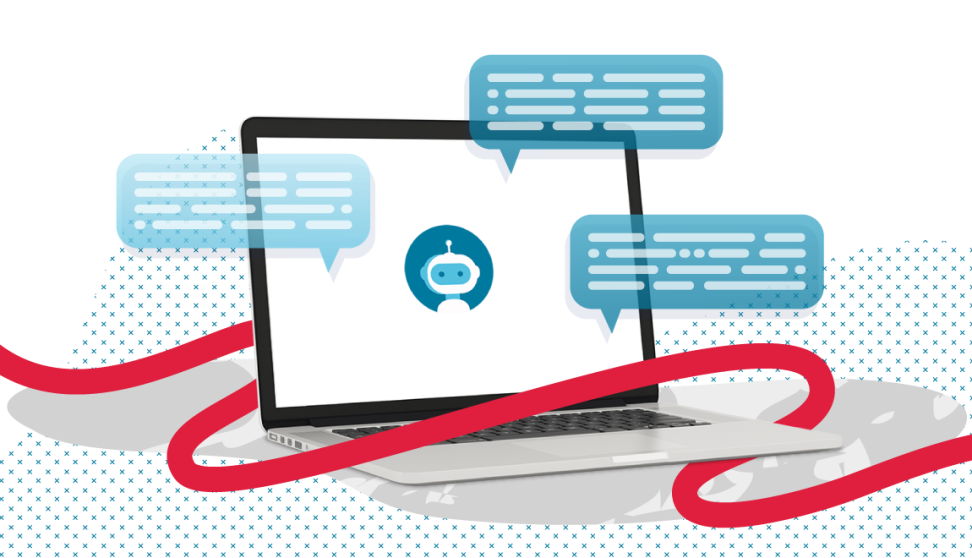Access Control and AI: A Revolution in System Management Simplicity

Setting up and managing an access control system can feel like a big puzzle to many administrators. With so many different parts like user groups, access rights and door schedules, it can seem daunting, especially at first. This complexity requires a new, more intuitive approach, and artificial intelligence (AI) offers one.
It's called Natural Language Processing (NLP), and it's a part of artificial intelligence that can understand and interpret human language. The goal is to make setting up and managing access control systems much easier and more efficient. In this blog post, we take a closer look at how an NLP-based chatbot can completely transform managing an access control system.
The Challenges of Access Control
The world of access control can be a complicated maze for many, especially when it comes to large facilities. Ensuring security, providing appropriate access, and keeping track of everything is no easy task. It is a process that often consists of a myriad of parameters, each of which is important and adds another layer of complexity to the task. This web of intricate details can quickly become daunting and result in a process that is not only time consuming, but also error prone.
These hurdles are most noticeable during the setup phase of access control systems. This is the time when the system must be tailored to the specific needs of the facility, including identifying and categorizing access rights for potentially hundreds or even thousands of users.
Figuring out who has access, where, and when is a difficult undertaking that requires precision and attention to detail. It's a phase where the workload is heavy, and the learning curve can be steep. For administrators new to the system, navigating this terrain can be challenging. The stakes are simply very high during the setup phase.
A well-implemented access control system can greatly improve the security of a facility, while mistakes can lead to security breaches.
Harnessing the Power of AI
AI, with its ability to learn, adapt, and solve complex problems, offers a solution to these challenges. Natural Language Processing, a specific field within AI that focuses on human-computer interaction, can be harnessed to simplify access control. By employing a chatbot powered by NLP, we can redefine how we set up and manage access control systems.
Imagine having to manage a jumble of instructions, rules, and schedules while learning a new system. Sounds like a headache, doesn’t it? That's often the reality for many people setting up an access control system for the first time. But what if instead of navigating through a maze of menus and settings, you could just type or say what you want to happen? That's where the chatbot comes in.
A chatbot utilizing NLP can understand and interpret human language, turning complex tasks into straightforward commands. For instance, an administrator setting up an access control rule can simply type into the chatbot:
"Deny access to Room 122 for all users of Unit XY from 10 p.m. to 6 a.m. and on Sundays."
The chatbot processes this command, executing the desired operation without the need for traditional menu navigation.
The AI-powered chatbot can comprehend a wide array of commands, like:
- Scheduling: You can easily set up access schedules by giving commands such as "Set access for Room 122 to 9 a.m. to 5 p.m. on weekdays for Unit XY". The AI bot would then automatically create the appropriate access schedule, freeing administrators from the task of manually setting up time slots.
- User Queries: With AI, you can get answers to specific user access queries. Just ask "Who has access to Room 122 on Sundays?" and the chatbot will pull up the relevant information from the database, saving you from having to manually look through records.
- Access Reports: Need to generate detailed access reports? The chatbot can help there as well. With a simple command like "Show all accesses to Room 122 last Sunday", the bot will provide a comprehensive list of all the users who accessed that room on the specified date.
- Rules Setup: The chatbot can assist in setting up rules for access control. For instance, you could say "Deny access to Room 122 for Unit ZY from 10 p.m. to 6 a.m.". The bot will take care of the rest.
- Exception Handling: The chatbot can also help manage exceptions. If you need to give a specific user access to a room, they normally wouldn't be able to access, you could command "Grant John Doe access to Room 122 for today only", and the bot would temporarily adjust the access control parameters accordingly.
Proactive Suggestions from the Chatbot
The ability of an AI-driven chatbot to learn sets it apart from traditional access control systems. Over time, as the chatbot interacts more and more with the administrator, it begins to collect and process large amounts of data. Thanks to advanced algorithms and machine learning capabilities, the chatbot begins to understand patterns, habits, and user behavior.
This ability to learn from previous interactions allows the chatbot to not only respond to commands, but also make predictions and proactively suggest actions based on observed patterns.
For example, imagine a scenario where an administrator frequently denies access to certain areas over the weekend and makes these changes manually each week. The AI chatbot that detects this pattern might suggest introducing a recurring rule.
It could say something like, "I have noticed that you frequently restrict access to certain areas on weekends. Would you like me to create a recurring rule to automate this task?" If the administrator accepts this suggestion, he can streamline the process, making it more efficient and less prone to human error.
Another example might be detecting patterns in user access behavior. Let us say the AI detects that a particular user frequently requests temporary access to a specific room outside of their usual access parameters. The chatbot might then suggest, "The user XYZ frequently needs access to room 122 after hours. Would you like me to adjust his access rights accordingly?"
Because the AI-driven chatbot is constantly learning and adapting, it is more than just a simple tool - it becomes a powerful assistant that greatly simplifies the management of access control systems. This ability to learn and make proactive suggestions makes the system more dynamic, user-friendly and efficient, ultimately revolutionizing the access control landscape.
Possible downsides and mitigation
While AI chatbots bring numerous advantages, potential downsides exist. Misinterpretation of commands and privacy concerns are potential issues.
However, through continuous learning and feedback, the chatbot can improve its command understanding. Rigorous security measures can also be put in place to protect sensitive data, ensuring the system remains reliable and secure.
It’s no doubt that AI and NLP offer a groundbreaking solution to the complexities of managing access control systems. By turning complicated tasks into simple commands, a chatbot can make the system more user-friendly and efficient. As we lean into the future, this AI-enabled approach is not just a nice-to-have approach, but a necessity for improving security standards especially across large facilities.



